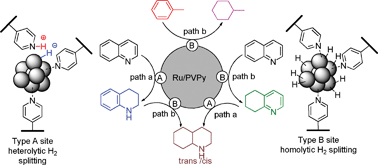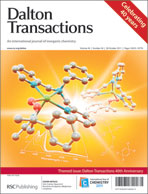Hydrogenation of arenes and N-heteroaromatic compounds over ruthenium nanoparticles on poly(4-vinylpyridine): a versatile catalyst operating by a substrate-dependent dual site mechanism†
Abstract
A nanostructured

- This article is part of the themed collection: Dalton Transactions 40th Anniversary

 Please wait while we load your content...
Please wait while we load your content...